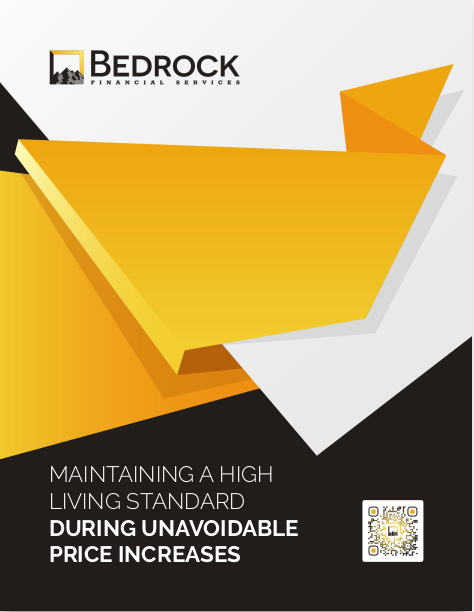Key Takeaways
-
Clients often resist buying insurance products not because they don’t see value, but because they mistakenly believe they already have the coverage they need.
-
Your job isn’t just to explain what the product does; it’s to clarify what it doesn’t do compared to what they currently have, and why that difference matters now.
Start by Understanding the Source of Assumptions
You can’t overcome a misconception you don’t fully understand. Before jumping into your pitch, take a beat to understand what your client thinks they have. You’ll often find they’ve generalized coverage from one product and assumed it applies elsewhere.
Many people assume:
-
Employer-provided coverage is permanent.
-
All life insurance policies are the same.
-
Disability insurance is built into workers’ comp.
-
Medicare or health insurance covers long-term care.
These assumptions form the silent wall that blocks your message.
Ask Before You Explain
Instead of diving into features, begin with smart questions. Clients are more likely to open up about what they believe they already have if you ask without challenging them directly.
Try questions like:
-
“Can you walk me through what your current plan includes?”
-
“What kind of protection do you believe this provides if something changes next year?”
-
“Has anyone reviewed your coverage with you recently?”
When you ask, you gain insight and earn trust. When you tell, you risk defensiveness.
Clarify What They’re Actually Covered For
Once you know their belief, compare it to their reality. Clients may have the basic version of something, not realizing what it lacks. You can walk them through what they do have without making them feel foolish.
Use plain language and structure your conversation around contrasts:
-
“This covers X, but not Y or Z.”
-
“Your current policy ends at retirement, but the need doesn’t.”
-
“This plan covers hospitalization, but not extended home care.”
The goal is to surface what’s missing—not to criticize what they already have.
Reframe the Conversation Around When Needs Shift
Many clients don’t resist coverage—they resist timing. They may think: “I’ll need that later,” or worse, “I already got that taken care of years ago.” Timing is everything in this business.
Bring timelines into your messaging:
-
“That employer plan ends when you retire, and retirement might be just five years away.”
-
“The policy you got in 2015 was right for then—but has your financial picture changed since?”
-
“You had that reviewed when your kids were little. Now they’re grown—do you still want the same structure?”
When you align the policy with life’s actual timeline, the conversation becomes grounded in relevance.
Simplify the Comparison Without Dumbing It Down
Your clients aren’t looking for a lecture. They’re looking for clarity. You don’t need to water down complex products—you need to express them in contrasts that are easy to grasp.
Try tools like:
-
Side-by-side coverage visuals
-
Timeline charts showing coverage expiration
-
One-page scenario walkthroughs (“What if… then what?”)
Avoid deep product dives unless the client asks for them. Most just want to know: “Is this better than what I think I have—and why?”
Focus on Triggers That Matter to Them
People pay attention when a message hits a personal nerve. Instead of listing product features, position them around trigger points your clients care about in 2025:
-
Rising healthcare costs
-
Growing retirement insecurity
-
Delayed retirement ages and shrinking employer benefits
-
Increased caregiving roles for aging parents
Frame coverage as a proactive solution to these pressures. Instead of starting with “Here’s a product,” start with “Here’s a problem you’ll likely face soon.”
Anticipate the “But I Already Have…” Objection
If you sell long enough, you’ll hear it in some form every week: “But I already have that.”
Here’s how to move through it:
-
Acknowledge it first. “It’s great that you already have something in place.”
-
Follow with context. “Let’s take a quick look to see how it aligns with today’s needs.”
-
Then show a gap. “Most people I work with are surprised to see this piece missing.”
When you validate and then explore—not push—you reduce resistance and increase engagement.
Show the Cost of Inaction Without Fear Tactics
Clients need to feel the consequences of misbeliefs—but they don’t need to be scared into buying. You can introduce risk gently by showing the cost of being wrong:
-
“If you’re right, great—you’re covered. But if there’s a gap, it might cost you a lot more later.”
-
“We can confirm this together now, or wait until a claim tests it. Which do you prefer?”
-
“Many people don’t find out what’s missing until it’s too late—and by then, the options are fewer and more expensive.”
Fear closes doors. Foresight opens them.
Watch for the “Same Name, Different Product” Problem
A big source of confusion in 2025 is name overlap. Policies can sound identical but function very differently. Two people can both say they have “disability insurance,” but one has a group short-term policy and the other has a long-term individual policy.
Be prepared to:
-
Clarify terms: “When you say life insurance, are you referring to term or permanent?”
-
Check documents: “Let’s look at the policy to confirm the length, amount, and type.”
-
Compare benefits: “These both fall under the same category but solve different problems.”
This clears up false equivalence and opens the door to meaningful upgrades.
Don’t Just Sell Coverage—Reinforce Confidence
Many clients don’t buy because they feel overwhelmed. They retreat into what they think they have because it’s easier than facing the uncertainty of change.
Your role is to:
-
Simplify without condescending
-
Clarify without alarming
-
Empower without pressuring
By the end of the meeting, your client should feel smarter, more secure, and clearer on where they stand—even if they don’t buy that day.
Revisit Prior Conversations
Clients who rejected coverage before may have done so based on flawed assumptions. Reengage these prospects with updated questions:
-
“When we last spoke, you mentioned already having coverage. Have you had a chance to review it since then?”
-
“A lot has changed this year—want to do a fresh 10-minute check-in to see if your coverage still fits?”
-
“We didn’t move forward last time, but we may have missed something. Mind if I take another look with you?”
You’re not rehashing the old conversation—you’re reframing it in a new context.
Stay Ahead of Policy Expirations
Many clients don’t realize their policy has a shelf life until it’s too late. Especially with term coverage or work-provided benefits, expiration dates creep up fast.
Use calendar-based outreach:
-
10 years from issue date
-
Turning age 60, 65, or 70
-
5 years before planned retirement
Reach out proactively and frame it like a regular checkup: “It’s time to confirm your coverage still fits where you are today.”
Bridge the Gap with Visuals and Stories
Even the clearest explanation can fall flat if it’s only verbal. Bring in simple, client-friendly visuals:
-
Flowcharts that show what happens with and without coverage
-
Side-by-side policy feature tables
-
Future snapshot tools (“Where will you be in 5 years if this stays unchanged?”)
These tools build clarity fast and reduce the friction of imagined complexity.
Clear the Fog, Then Present the Fix
You don’t need to lead with your product. You need to lead with clarity. Once the client understands what they actually have (versus what they thought they had), you’ve created space for the solution to be welcomed.
Your fix should always feel like a correction, not a replacement:
-
“You’ve done a good job so far—this would just round out what’s missing.”
-
“You’re almost there—this piece closes the final gap.”
Respect builds relationships. Relationships create business.
Make Clarity Your Competitive Advantage
In 2025, products are plentiful, but clarity is rare. Your ability to differentiate yourself lies in removing confusion—not just promoting benefits. If your clients believe they already have what you’re selling, they’ll ignore you. If they realize they almost have it but not quite—they’ll listen.
Let’s make sure they listen.
Ready to Help You Clarify the Complex?
At Bedrock Financial Services, we help independent insurance professionals like you stand out by offering tools, training, and marketing support designed around one goal: making sure your clients don’t think they’re covered when they’re not. Our resources help you show the real difference your products make—clearly, confidently, and ethically.
Sign up with us today and let’s help you turn misunderstanding into meaningful sales.







